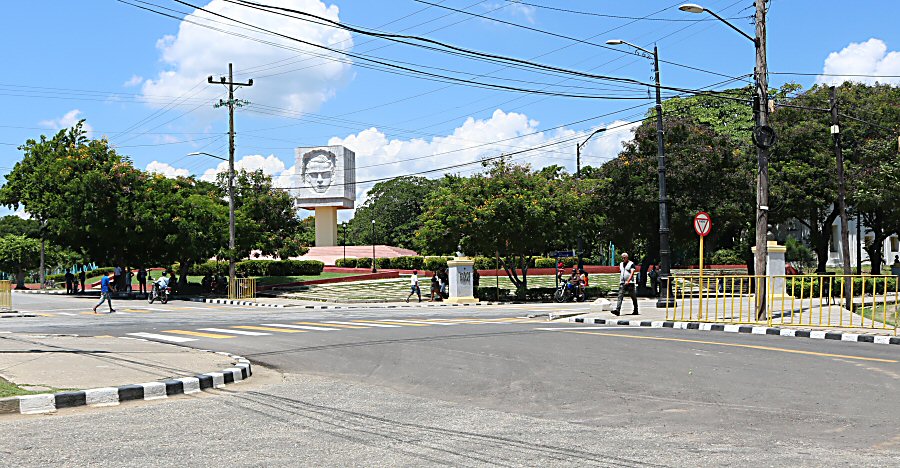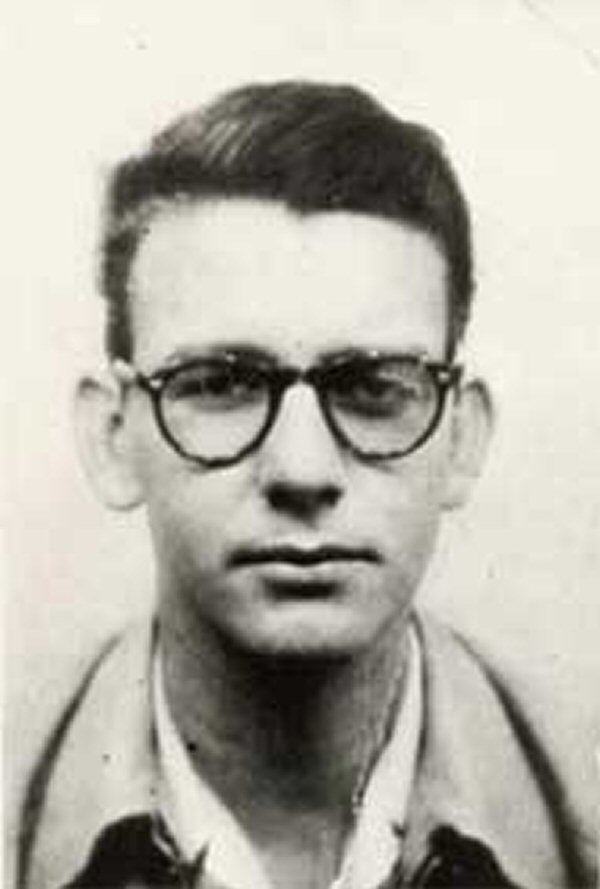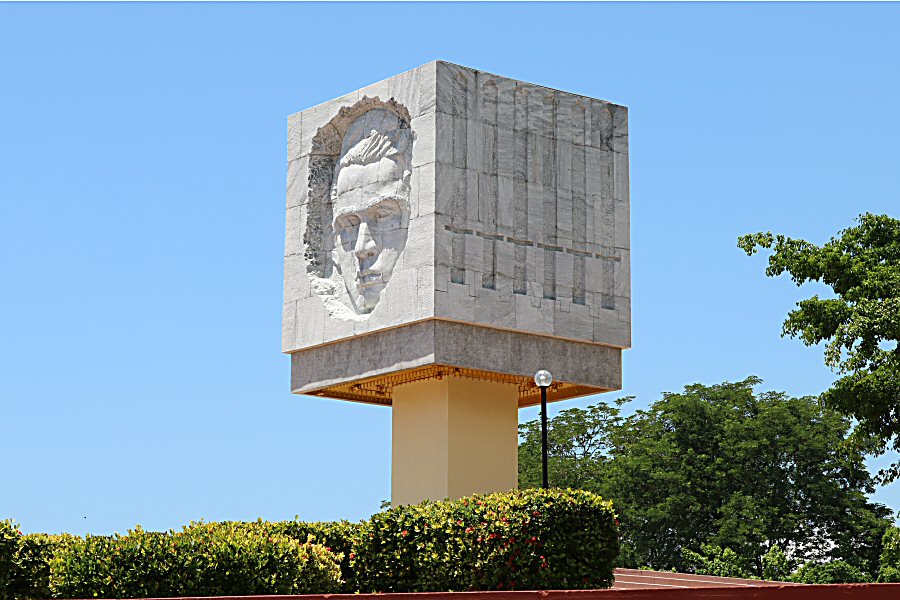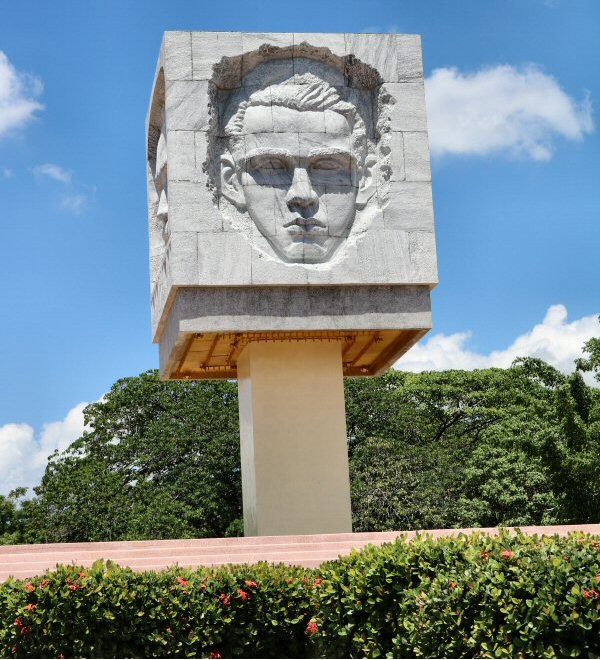Parque Histórico Abel
Santamaría is located on the Avenida de Los Libertadores where
it intersects with Calle Trinidad, in an area west of the
Moncada barracks.
Museum: Monday - Saturday 09:00-17:00

Parque Histórico Abel Santamaría
Parque Histórico Abel Santamaría
looks more like a small field than a park, consisting of the
complex, composed of museum, library and monument, inaugurated
on the ruins of old civil hospital Saturnino Lora (Complejo
Histórico Monumental Parque-Museo-Biblioteca Abel Santamaría) in
1973.
The hospital, served as the military
hospital (1856-1878), was a building of the neoclassical design.
It was converted into civil hospital with the name of General
Hospital in 1899. Later in 1921 the city council agreed to
appoint it as Civil Hospital Saturnino Lora in honor of the
great patriot of the Liberation Army. In the early 1960s a new
hospital was built adjacent to the demolished hospital and was
named Hospital Provincial Saturnino Lora.
 The hospital has a special meaning in
the memories of the Santiagueros, as it is a place that
witnessed the brutal events of the assault on the Moncada
barracks and the trial of Fidel Castro in 1953. It was seized by
a group of the rebels, headed by Abel Santamaría Cuadrado, for
its strategic position in relation to the Moncada barracks,
especially to the Officers’ Club. After the rebels were driven
back, all the rebels, captured by the soldiers in the civil
hospital, were shot to death in the small-arms target range of
the barracks within immediately two hours after the attack, and
their corpses were strewn throughout the combat area, as if they
were killed during the attack. Abel Santamaría’s eyes were
gouged out, while his sister Haydée was forced to watch the
procedure, and his corpse was also passed off, as if he was
killed during the attack 2 days before.
The hospital has a special meaning in
the memories of the Santiagueros, as it is a place that
witnessed the brutal events of the assault on the Moncada
barracks and the trial of Fidel Castro in 1953. It was seized by
a group of the rebels, headed by Abel Santamaría Cuadrado, for
its strategic position in relation to the Moncada barracks,
especially to the Officers’ Club. After the rebels were driven
back, all the rebels, captured by the soldiers in the civil
hospital, were shot to death in the small-arms target range of
the barracks within immediately two hours after the attack, and
their corpses were strewn throughout the combat area, as if they
were killed during the attack. Abel Santamaría’s eyes were
gouged out, while his sister Haydée was forced to watch the
procedure, and his corpse was also passed off, as if he was
killed during the attack 2 days before.
The hospital is also the building
where Fidel Castro was judged by the leading the assault on the
Moncada barracks in a small study room reserved for the Nursing
School. Here, he announced his claim in his self-defense, known
as “la historia me absolverá / the history will absolve me”. In
1973 the museum & library complex was founded here due to these
two historical events of great significance for Cuba. In 2000,
the first Classroom-Museum was inaugurated in this museum, at
the initiative of the city's historian Eusebio Leal Spengler to
promote the study of history and museology in Cuban primary
school children.
Historical events that took place
here are the subject of the museum. They are exhibited in 7
separate rooms. The sixth room is where
the idealist Doctor Mario
Muñoz Monroy was
detained when he was providing medical assistance to those
wounded in the action.
The last room is where Fidel Castro was tried
for the Moncada event. The original furniture from the period
when the trial was held, is preserved. Additionally, the
authentic toga used by Fidel Castro when delivering his
self-defense statement known as "History Will Absolve Me", is
displayed in a showcase. Toga is a loose flowing outer garment
worn by the citizens of ancient Rome, made of a single piece of
cloth and covering the whole body apart from the right arm.
The most noteworthy feature of the
park is the concrete monument in the shape of a gigantic cube
that was placed in the center of the area and above a fountain (Cien
Chorros). It has 4 faces with different reliefs: sphinx of Abel
Santamaría Cuadrado; sphinx of José Martí; 6 bayonets of the
army of tyranny, designating the judgment of the Army for
justice; and a verse of the National Anthem “Morir por la patria
es vivir / Dying for the homeland is living”. The water, gushing
from the fountain below, is rather impressive and looks like, as
if it supports the monument. It symbolizes the purity of ideals
of the young generation of the centennial like the fountain Cien
Chorros (Hundred Chorros), and the fusion of the ideals of the
young people that had assaulted the Moncada barracks with the
thought of José Martí on the centenary of his birth.
The monument was inaugurated in 1979.
It is the work of René Valdés Cedeño. It was declared National
Monument in 1998.


(1927 - 1953)